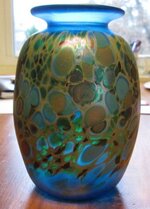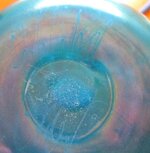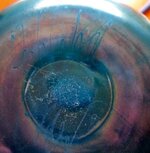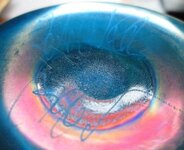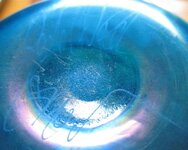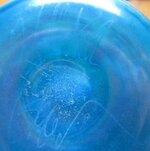trdhrdr007
Bronze Member
- Nov 1, 2009
- 1,427
- 1,332
The estate sale company I work with part time is handling a high end estate. Everything has been arranged & the owners are about half way through the pricing process. The main reason I work for these people is that I get to shop early. The owners do a pretty good job researching items so prices are generally reasonable. Some things do slip through the cracks. I suspect this vase may be one of those items. It's obviously a high end piece. Unfortunately the signature is illegible so it has been priced as a fancy vase. I'm hoping someone here can help with an ID so I'll know if it's a good deal. These pics are the best I could do.
